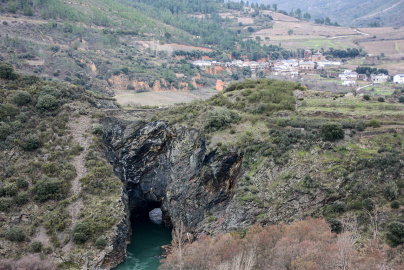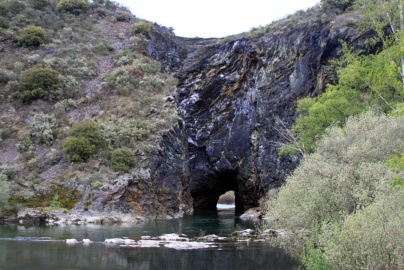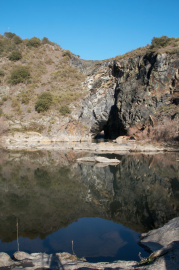
17.1 Soutochao
The headwaters of the Sil River are found near the border between the regions of Asturias and Castile and León, at a location known as Peña Orniz. The river begins its flow at an altitude of 1,980 meters above sea level, then runs for 234 kilometres through the provinces of León, Ourense, and Lugo. Eventually the river reaches the town of Os Peares, where it flows into the Miño River as its main tributary.
GEOMORPHOLOGY OF THE SIL RIVER
The section of the river that flows through Ribeira Sacra, from Quiroga to Os Peares, is about 60 kilometres long. It acts as a natural border between the provinces of Lugo and Ourense, with the final section flowing through the famous Sil Canyon, which has been designated as a Special Area of Conservation within the Natura 2000 network.
The Sil Canyon is an amazing geological feature that was created over the course of many years, by two primary factors: the powerful geological forces of plate tectonics, and erosion by the waters that have flowed constantly along the rocky riverbed.
VINEYARDS AND LANDSCAPES
From this point there are some fantastic panoramic views over the Sil River and its canyon, including vineyards where grapes are cultivated on terraces that cling to slopes of more than 45º. All of this in combination creates a landscape of exceptional beauty.
Grape cultivation in spaces like these means that except for some simple rail systems used to help bring the grapes up to the road, almost all work in the vineyards must be performed by hand, in the traditional way. This is also the hard way, but that’s why they call it “heroic viticulture”. The local sculptor Manuel Rial has created a large granite sculpture dedicated to the local heroes known as carreteiros or “carriers”, which is the traditional name given to the workers who traversed these steep paths and terraces carrying the harvest on their backs.
The river’s other bank is in the municipality of A Teixeira, and this is where we can see leafy green forests of oaks, pines, and chestnuts in the distance.
 Directions
Directions 


